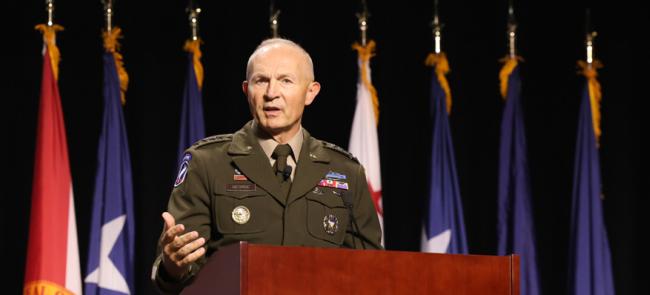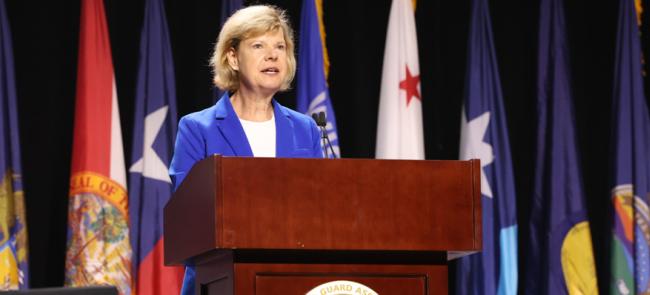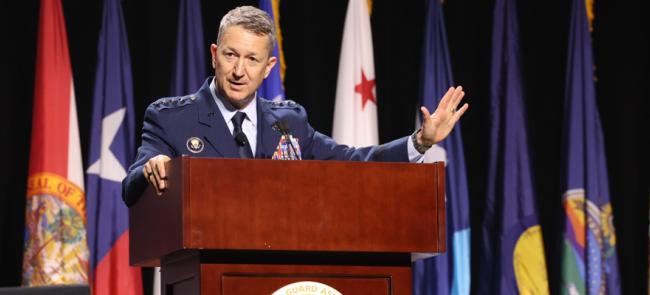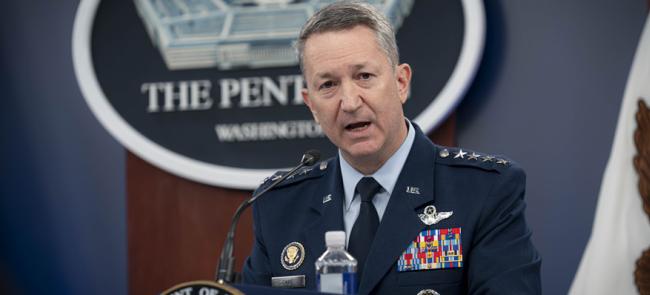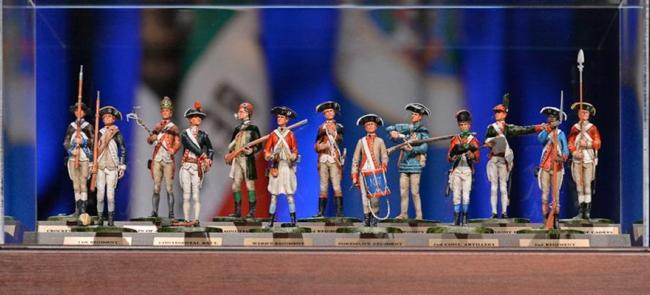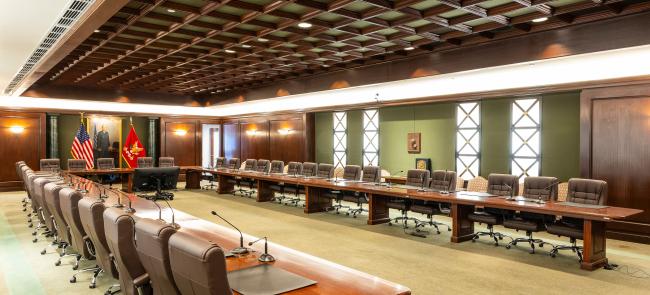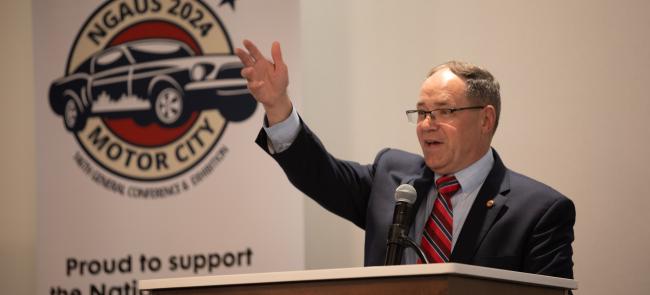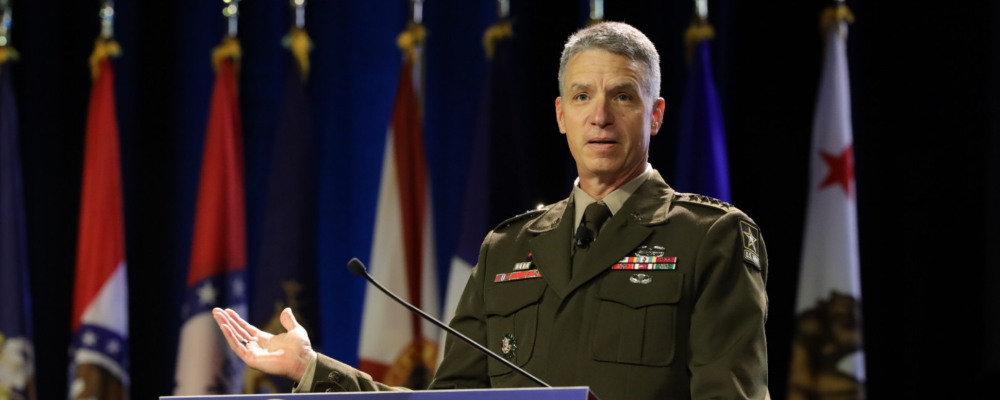
The Army’s No. 2 officer came to Las Vegas to thank the National Guard and share leaders’ vision of the future Total Force.
Gen. Joseph M. Martin, the Army vice chief of staff, said Army leaders recognize the sacrifice the Guard has made, especially over the past 20 months.
Martin was a last-minute addition to the 143rd General Conference & Exhibition, replacing Gen. James C. McConville, the Army chief of staff. McConville, who spoke at the previous two general conferences, stayed in Washington, D.C., to help oversee military evacuations in Afghanistan.
Those efforts, Martin noted, included both active-component and Guard forces.
“This operation is the ultimate team effort, where Regular Army, Guard and Reserve-component soldiers are working side-by-side to bring care and comfort to these people in need,” he said.
Martin is the Army’s chief operating officer, responsible for guiding modernization efforts, ensuring readiness of the force and welfare of soldiers, families and civilians for a million-man organization with a $178 billion annual budget.
He has previously commanded troops in Iraq and Poland, with formations that were a mix of both Guard and active component forces.
“So believe me when I say we understand your importance, and that we must ensure you are given the resources and time to train, modernize and care for your people appropriately,” Martin said.
Martin outlined ongoing Army transformation efforts, based largely on the shift to great power competition.
“We’re no longer able to rely on our current capabilities to dominate the future battlefield,” he said. “We will be contest in every domain, to include land, air, sea, space and cyberspace.”
“If we are to be successful in this environment, the Total Army must transform together,” he added. “This transformation is not about fighting the last war better. It’s about winning the next one, and winning the first battles of the next war.”
Part of that transformation has required the Army to make compromises on end strength. Martin said the planned force of 485,00 Regular Army, 336,000 National Guard and 189,500 Reserve soldiers is “about the minimum size we need to be.”
Meanwhile, the Army has stood up its first multi-domain task force, designed to deter, and if necessary, penetrate enemy anti-access and aerial-denial capabilities. And it continues to focus on the “Big Six” modernization priorities of long-range precision fires, next-generation combat vehicles, future vertical lift, network, air and missile defense, and soldier lethality.
Part of the transformation could include re-aligning formations and capabilities, Martin said. Meanwhile the new Regionally Aligned Readiness and Modernization Model, or ReARMM, is a deployment model designed to bring more predictability and stability to the force, including the Guard.
Martin said the Army is transforming, but leaders understand there is no silver bullet that can promise success.
“This is the heart of our transformation,” he said. “We recognize no single capability, component or service will achieve victory alone. But transformation is not easy, and this will take time.”

